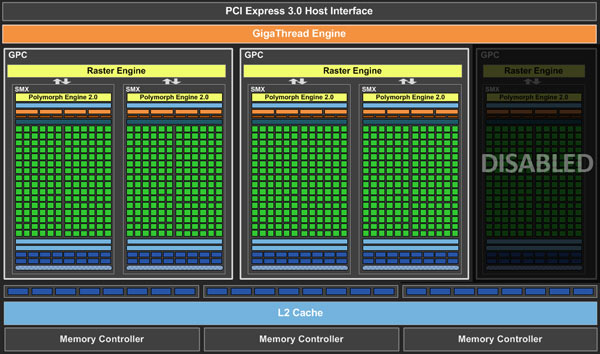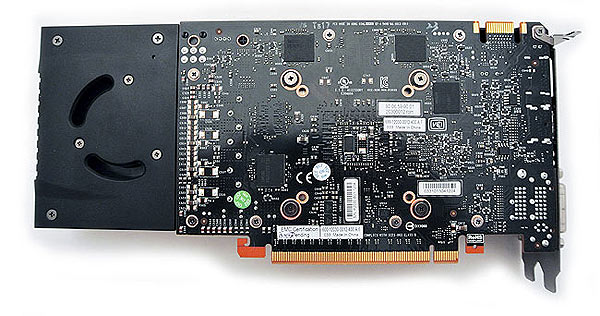GeForce GTX 650 Ti Boost Review: A Budget-Oriented GK106-Based Boss
GeForce GTX 650 Ti Boost: Kepler Rides Again
Rare is it that one graphics processor vendor holds onto an important price segment uncontested. However, Nvidia's GeForce GTX 650 Ti was the only compelling $150 card for darned near six months. Similarly, AMD's Radeon HD 7850 locked down the segment right above that, ranging between $175 and $200, depending on how much memory you wanted.
Less than a week ago, though, AMD introduced its Radeon HD 7790 for $150, encroaching on previously uncontested space. Based on a new Bonaire GPU, the first member of AMD's Sea Islands family, it fired a shot across Nvidia's bow. And now Nvidia fires back with the GeForce GTX 650 Ti Boost, jockeying for attention in the same market as the Radeon HD 7850.
While AMD manufactured a new ASIC for its Radeon HD 7790, Nvidia is recycling the GK106 graphics processor already featured on the GeForce GTX 650 Ti and GeForce GTX 660, both of which surround the Radeon HD 7850's $175 to $200 price range. It makes sense to employ that same, successful graphics processor to address the hole in Nvidia's line-up, and that's what the company is doing with its latest offering.

Put simply, GeForce GTX 650 Ti Boost combines the setup and shader configuration of Nvidia's GeForce GTX 650 Ti with the 660's back-end and 192-bit memory interface. This is a good thing, we think. On several occasions, we've seen the GeForce GTX 650 Ti limited by relatively low memory bandwidth. Although GK106's third asymmetrical GPC is disabled, all of the chip's ROP partitions and 64-bit memory controllers are left intact. The result is four streaming multiprocessors totaling 768 CUDA cores and 64 texture units. Three ROP clusters output up to 24 full-color raster operations per clock, and the aggregate memory interface is 192-bits wide thanks to a trio of 64-bit controllers.
In addition, the new card's core clock is up to 980 MHz, which is 55 MHz more than the GeForce GTX 650 Ti and identical to the 660. As its name indicates, Nvidia enables GPU Boost on this model, claiming that the core typically sees at least 1,033 MHz. Combine that with the same 1,502 MHz GDDR5 memory (yielding 144.2 GB/s of bandwidth) found on GeForce GTX 660, and there's good reason to be optimistic about the balance struck by GeForce GTX 650 Ti Boost. In fact, based on its specifications, we're expecting this card to perform more like the GeForce GTX 660 than the 650 Ti. The benchmarks will show whether that's the case, though.
This is GK106's third outing, so there aren't any new features to discuss, really. If you want to know more about this GPU, check out Nvidia GeForce GTX 650 and 660 Review: Kepler at $110 and $230.
| Header Cell - Column 0 | GeForce GTX 650 Ti | GeForce GTX 650 Ti Boost | GeForce GTX 660 | Radeon HD 7850 |
|---|---|---|---|---|
| Shader Cores | 768 | 768 | 960 | 1,024 |
| Texture Units | 64 | 64 | 80 | 64 |
| Color ROPs | 16 | 24 | 24 | 32 |
| Fabrication process | 28 nm | 28 nm | 28 nm | 28 nm |
| Core/Boost Clock | 925 MHz | 980/1,033 MHz | 980/1,033 MHz | 860 MHz |
| Memory Clock | 1,350 MHz GDDR5 | 1,502 MHz GDDR5 | 1,502 MHz GDDR5 | 1,200 MHz GDDR5 |
| Memory Bus | 128-bit | 192-bit | 192-bit | 256-bit |
| Memory Bandwidth | 86.4 GB/s | 144.2 GB/s | 144.2 GB/s | 153.6 GB/s |
| Graphics RAM | 1 or 2 GB GDDR5 | 1 or 2 GB GDDR5 | 2 GB GDDR5 | 1 or 2 GB GDDR5 |
| Power Connectors | 1 x 6-pin | 1 x 6-pin | 1 x 6-pin | 1 x 6-pin |
| Maximum TDP | 110 W | 134 W | 140 W | 130 W |
| Price | $140 - $180 (Newegg) | 1 GB: $150 (MSRP)2 GB: $170 (MSRP) | $215 - $280 (Newegg) | $180 - $200 (Newegg) |
The differences between Nvidia's cards are important, but we're far more interested to know how GeForce GTX 650 Ti Boost fares against the Radeon HD 7850.
Stay On the Cutting Edge: Get the Tom's Hardware Newsletter
Get Tom's Hardware's best news and in-depth reviews, straight to your inbox.
GeForce GTX 650 Ti Boost: The Reference Card

Considering that the GeForce GTX 650 Ti Boost employs the same GPU and memory interface, we're not surprised that it looks a lot like Nvidia's GeForce GTX 660 reference card. There's not a single feature distinguishing one from the other. The PCB even appears to sport the same traces.
The circuit board plus Nvidia's cooling hardware measures 9.5" x 4.5" x 1.5".

As we saw on the GeForce GTX 660, this card's PCB is only 7" long, with almost 3" of overhang attributable to the fan and shroud. There are GeForce GTX 660 models available with smaller coolers, so it's likely that shortened GeForce GTX 650 Ti Boost cards will surface, too.
Four of this model's memory modules are easy to spot, uncovered, on the back of the board.

Nvidia's reference GeForce GTX 650 Ti Boost comes equipped with two dual-link DVI ports, one HDMI port, and DisplayPort output, matching the GeForce GTX 660. Both models support up to four monitors at a time.

This card bears the same 134 W as GeForce GTX 660. It likewise requires one six-pin auxiliary power cable.
A single 65 mm fan keeps the card cool, while exhausting heated air out through its I/O bracket. A single SLI header indicates support for dual-card configurations, and simultaneously tells us that three- and four-GPU arrays are not possible.
Current page: GeForce GTX 650 Ti Boost: Kepler Rides Again
Next Page Test Setup And Benchmarks-
Souv_90 anandtech review is out for 650 ti boost...just faster than 7790 and slower than 7850 in every games tested only except bf3 and ShogunReply
http://www.anandtech.com/show/6838/nvidia-geforce-gtx-650-ti-boost-review-
(wonder why tom's review is swaying more in favour of kepler everytime I see) -
EzioAs This card pricing seems a little too good that it kinda makes me regret getting the GTX660 just a while ago. Damn it, I hate the Kepler series and their pricing :/Reply
Although I can't say the same about the power consumption and some part in me actually hoped and expected the card would come with a game bundle. -
Memnarchon Souv_90anandtech review is out for 650 ti boost...just faster than 7790 and slower than 7850 in every games tested only except bf3 and Shogunhttp://www.anandtech.com/show/6838 st-review-(wonder why tom's review is swaying more in favour of kepler everytime I see)Techpowerup said also that 650ti boost is faster than 7850.Reply
edit: hardwarecanucks / PCPerspective. A lot of sites agree with Tom's, 7850 and 650ti boost are about the same in performance.
But the point is that is similar to 7850 while its cheaper. Now that's what I wanted to see when I was saying we need better performance for $$$. Now lets see AMD dropping its prices too so we can have a sweat war between them that profits our wallet :D. -
tomfreak It looks to me form the chart except the 7900. AMD GCN is are actually far more efficient here. Better compute + better performance/watt. So Nvidia taunting about their 'most efficient GPU' seems got defeated again. I wonder what if AMD make 7900 a 1.5x of 7800.Reply
I still do not like the idea of Odd memory configuration. 1GB/2GB @ 192bit. The last 512MB from 2GB model is only getting 64bit memory bandwidth. Why cant they offer a a proper 1.5GB version @ middle price $159?
Tomshardware fail to bench 2GB 7850. I like to see that vs 2GB 650Ti Boost. -
Henrik Olsson from reviews around the web the GTX 650 ti boost is trading blows with the 7850 very well. i just gotta say it took nvidia awhile to get back into the game after AMD lowerd the pricing of there cards. good to see some competion again insted of just going "get the AMD card they are cheaper"Reply -
de5_Roy darn it. i was enjoying reading the review considering i've been waiting to se how this card performs ever since i heard of it. 192bit interface with a cut-down gk106 under $170 and sli - makes gtx 650ti irrelevant and puts a good deal of hurt on the 128bit 7790 in terms of config. i doubt gtx650tiboost can outperform a 7790 in compute tasks but this is a gaming gfx card above all. this seems like a good proposition for budget 1080p gaming, so far.Reply
now, if amd brings back 7850 1gb, it'd be awesome (i don't buy the 'lack of gddr5 chips' excuse for a second).
will there be gtx650tiboost sli performance analysis vs 7790 cfx and 7850 1gb cfx? hopefully nvidia has good drivers available because the sub $200 gfx card price war just got heated up.
edit: imho nvidia is late to the sub $200 gfx card price war. this card shoulda come out instead of gtx 650ti (128bit). amd should be updating with new gcn cards soon while kepler 2.0 seems nowhere in sight. better late(!) than never, i guess..